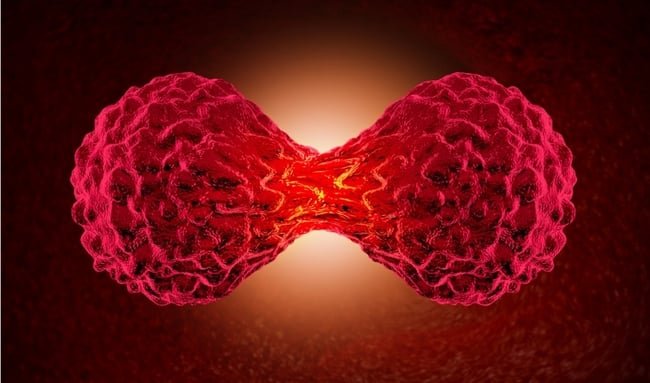Keywords:
By Achim von Leoprechting
Massively parallel sequencing has rapidly become a must-have tool of the trade in molecular biology and drug discovery research. In recent years, the cost of next-generation sequencing (NGS) has declined exponentially, while throughput, accuracy, and read lengths have soared, and multiple regulatory-compliant sequencing technologies have achieved commercial success.

Major advances have been made in NGS technology, combined with global efforts to identify and catalog genetic mutations in a range of cancer types and tumors. In this two-part series, we will look at how these discoveries are being implemented in diagnostic, therapeutic, and prognostic applications, and how they are driving the adoption and, in the not-too-distant future even routine use of sequencing and related techniques in clinical laboratories.
The Promise of NGS
With the emergence of NGS in clinical oncology have come abundant examples in the literature of the value of sequencing tumor-derived DNA. These include identifying hotspots in cancer-predisposing genes or specific cancer-associated mutations in one or more genes that might contribute valuable diagnostic or prognostic insights. This information could also help guide clinicians in therapeutic decision-making and selection of drugs to maximize the efficacy of treatment, limit exposure to toxic chemotherapeutic agents with low efficacy for the individual patient, and minimize the risk of developing drug resistance.
Clinical oncologists are also recognizing the value of additional information to be gained from RNA sequencing (RNAseq) to define the tumor transcriptome. Perhaps further into the future, there will probably be direct clinical application of sequencing data derived from noncoding RNA species such as microRNAs (miRNAs) and long noncoding RNAs (lncRNAs) to detect aberrations that may affect gene expression and overarching gene regulatory networks that control biochemical pathways essential for tumorigenesis, malignant disease progression, and metastasis.
Another promising area that is still in its infancy is the characterization of epigenetic changes in tumor DNA and determining how those might relate to cancer diagnostics, monitoring of disease progression and drug response, and predicting drug sensitivity and resistance.
Immunotherapeutic strategies designed to stimulate the body's immune system to recognize and destroy tumor cells are increasingly being developed to complement chemotherapeutic regimens. The results of NGS can be used to predict patient response to immunotherapy as well as directing the design of therapeutic cancer vaccines. Exome sequencing can reveal whether a neoantigen – an antigen created by a somatic mutation in a tumor – is presented by the major histocompatibility complex for recognition by sensitized T cells.1
The growing interest in clinical applications of NGS in oncology has also recently spurred discussion and debate on what and how much sequence data are needed to ensure accurate interpretation and appropriate utilization of genomic information in patients with cancer.
Too Little Information Is Not an Option
One issue swirling around at present is whether sequencing the DNA from a tumor biopsy of an individual patient is sufficient for diagnostic and therapeutic purposes. Or should sequence data generated from a healthy sample from the same patient serve as a matched control for comparison purposes? As noted in the article ‘Cancer Sequencing Controls’, sequencing a patient's normal DNA is not common practice in clinical labs and would certainly add to the cost of analyzing only tumor DNA.2 The extra workload and cost, though, must be weighed against the risk of basing treatment decisions on inaccurate information and an incomplete diagnosis.
The results of an analysis of 815 paired tumor-normal samples from patients with 15 different tumor types illustrated the risk of misinterpreting somatic alterations identified as tumor-specific mutations in the tumor genome using NGS.3 Many of the same changes were shown to be present as germline variations in NGS analysis of the normal sample. Jones and coauthors reported in Science Translational Medicine that only about a third of the mutations found on sequencing the tumor exome were tumor-specific. The other two thirds were germline alterations and would have led to false positive findings – including in cancer-predisposing (potentially actionable) genes – if only the tumor DNA had been sequenced and that information alone used to inform therapeutic decisions.
Insights such as these can massively improve diagnostic power, but also have consequences clinical analytical laboratories that will need to increase throughput to meet the needs of sequencing both normal and tumor DNA – the subject of the second in this two-part series.
References
- Gagan J, Van Allen EM. "Next-generation sequencing to guide cancer therapy." Genome Medicine 2015; 7:80.
- Williams R. "Cancer sequencing controls." The Scientist 2015. Available at http://www.the-scientist.com/?articles.view/articleNo/42682/title/Cancer-Sequencing-Controls (Last accessed December 2015).
- Jones S, Anagnostou V, Lytle K, et al. "Personalized genomic analyses for cancer mutation discovery and interpretation." Sci Transl Med 2015;7(283):283.










